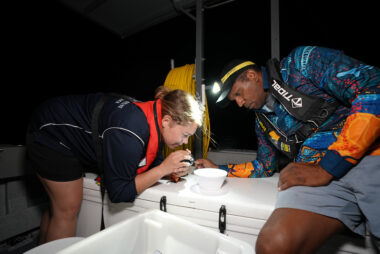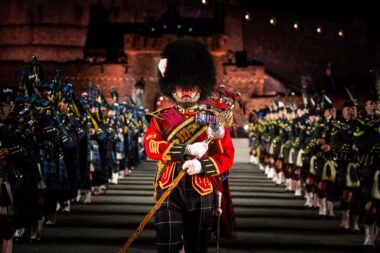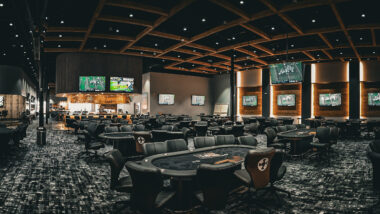Dozens of Science Week stories around Victoria
- Art-science exhibition explores science fiction – Parkville
- A morning with Aussie astronaut Katherine Bennell-Pegg at Scienceworks
- How to grow a Martian garden – Melbourne, Shepparton, Wodonga & Bendigo
- Breakfast in a petri dish: inside the lab of ‘The Man Who Invented Vegemite’ – Beaufort
- What should be the future of the Otway Ranges? – Colac
- Hedy Lamarr’s Hollywood glamour and scientific genius on stage – Bendigo & Melbourne
- Today’s women in science on their historical foremothers – State Library of Victoria
- Canine happiness 101: if dogs could talk, you might be shocked
- Raising rarity: saving Victoria’s most threatened plants – Royal Botanic Gardens Cranbourne
- Dark matter on the move – Ballarat, Dandenong & Melbourne
- Can you see the stars? Dark skies versus light pollution
More on these highlights below.
Scientists, experts and event organisers are available for interview throughout National Science Week.
Read on for direct contact details for each event, or contact Tanya Ha – [email protected] or 0404 083 863.
Visit ScienceWeek.net.au/events to find more stories in your area.
Media centre here. Images for media here.
Victoria’s launch event: ‘Survive & Thrive’ and a T. Rex who didn’t
6pm tonight at Melbourne Museum
National Science Week kicks off with the scientists who have the tough but rewarding job of saving species.
Launch event with:
- Dr Marissa Parrott, Zoos Victoria will discuss her work in the Fighting Extinction program, focusing on critically endangered species.
- Dr Noushka Reiter: Royal Botanic Gardens shares expertise on plant conservation and the vital efforts to preserve our unique flora.
- Dr Ken Walker: Senior Curator of Entomology at the Museums Victoria Research Institute will delve into taxonomy, exploring the significance of naming species and what we’ve identified.
- And the awe-inspiring, 66-million-year-old fossil skeleton of Tyrannosaurus rex in the world-class exhibition, Victoria the T. rex.
Where: Melbourne Museum, 11 Nicholson Street, Carlton
Media enquiries: [email protected] or 0466 622 621.
Art-science exhibition explores science fiction – Parkville
The free exhibition SCI-FI: Mythologies Transformed at Science Gallery Melbourne offers fresh insights on science fiction – a genre built on envisioning alternative futures and imaginary realms.
The lines connecting science fiction with ancient philosophy and mythologies are brought to light by Asian artists and collectives. Shown in Australia for the first time, this narrative is expanded to incorporate First Nations perspectives and knowledges.
From Saturday 10 August. Event details: www.scienceweek.net.au/event/sci-fi-mythologies-transformed/parkville
Media enquiries: Katrina Hall, [email protected] or 0421 153 046.
Science Gallery Melbourne Director Ryan Jefferies and Head of Curatorial Tilly Boleyn are available for media interviews.
A morning with Aussie astronaut Katherine Bennell-Pegg – Spotswood
Australia’s first astronaut trained under the Australian flag Katherine Bennell-Pegg will be touching down at Scienceworks to share her love of space and science, launch a rocket, and meet visitors.
From her beginnings in Sydney, Katherine Bennell-Pegg has long had her eyes set on space. She holds four degrees across science (physics major), space and aeronautical engineering. She is passionate about using human spaceflight and space to unlock opportunities for researchers and industry, as well as inspiring the next generation of astronauts and scientists.
Sunday 11 August. Event details: www.scienceweek.net.au/event/journey-beyond-a-morning-with-astronaut-katherine-bennell-pegg-3/spotswood/
Media enquiries: [email protected] or 0466 622 621.
How to grow a Martian garden – Melbourne, Shepparton, Wodonga & Bendigo
Could you live in a Martian garden? Over the next 30 years, human missions to the moon and Mars are planned: but can these extreme environments provide habitat for humans?
‘The Martian Garden’ events across South Australia, Victoria, and Western Australia will invite the public to explore the challenges and try their hand at life beyond Earth at four activity stations while Mars rovers roam nearby.
Visitors will see plant growing cabinets similar to those on the International Space Station, they can code plant bots to harvest produce, find out what makes different foods suitable for space, and explore a range of space crops including duckweed, microgreens, tomato, strawberry and chilli.
Hear from ARC Centre of Excellence in Plants for Space researchers about selecting and adapting plant and microbial species to survive and thrive in new and extreme environments, how to support sustainable new ecosystems off-world, and how to find novel approaches back on Earth.
Media enquiries: Lieke van der Hulst, [email protected] or 08 8313 6669; Frazer Thorpe, [email protected] or 0459 762 299.
Scientists Mat Lewesy, Kim Johnson and Frazer Thorpe from La Trobe University, and Jenny Mortimer and Christine Feinle-Bisset from the University of Adelaide are available for media interviews.
Inside the lab of ‘The Man Who Invented Vegemite’ – Beaufort
Vegemite caviar on toast? 101 years after its invention by preeminent scientist and food technologist, Dr Cyril Callister, the iconic Aussie spread that’s already been launched into space and proven to conduct electricity is set to fuel a new class of scientific discoveries.
Inaugural Cyril Callister Foundation Scholarship winner Samuel Varjabedian – a future microbiologist undertaking his honors on reptile-related salmonella at Ballarat’s Federation University – will switch focus to experiments using Vegemite to celebrate the launch of Cyril’s Lab. A replica 1923 science space at Cyril Callister Museum.
Vegemite caviar is one of the experiments adapted for use to inspire young scientists. Samuel will also demonstrate how the spread conducts electricity on a breadboard circuit connected to a lightbulb.
Monday 12 August: www.scienceweek.net.au/event/the-man-who-invented-vegemite-cyrils-lab-launch/beaufort/
Media enquiries: Libby Callister, [email protected] or 0418 151 685.
What should be the future of the Otway Ranges? – Colac
The Otway Ranges is home to fern gullies, giant beech trees, towering Californian Redwoods, and many of Australia’s favourite animals including kangaroos, echidnas, platypus, koalas, birds, and even glow worms. Scientists want more people to have a voice in securing the future of this natural treasure.
People from all walks of life can come to a free public forum and be part of efforts to conserve and protect the rich natural environment of the Otways and beyond. The Otways Ecological Research Forum brings together scientific researchers, public and private land managers, and the general public to discuss findings, innovations, and challenges in ecology, conservation science, and landscape-scale management.
Successful conservation needs scientists and on-ground land managers working together towards a shared vision. The forum acts as a direct communication line, bridging science, practice, and the broader community.
Tuesday 13 August. Event details: www.scienceweek.net.au/event/2024-otways-ecological-research-forum-ecology-the-collaborative-science-we-must-get-right/colac
Media enquiries: Andrea de Kauwe, [email protected] or 03 5237 9297.
Lizzie Corke (CEO and Founder of the Conservation Ecology Centre) together with Dr Jack Pascoe, Dr Claire Fenuik and other researchers are available for interviews.
Images are available of the Otway Ranges, its wildlife, and conservation researchers at work.
Hedy Lamarr’s Hollywood glamour and scientific genius on stage – Bendigo & Melbourne
Hedy Lamarr, glamorous star of the silver screen, also invented Frequency-Hopping Spread Spectrum Technology that makes the world of wireless communication tick. From Austria to Hollywood, WWII, torpedoes, ecstasy, and intrigue to the very cell phone in your pocket, Hedy Lamarr is there!
American actor and writer Heather Massie, who also studied astrophysics, enchants the audience as Hedy Lamarr, along with Jimmy Stewart, Bette Davis, Louis B Mayer, and more in a one-woman solo play with 36 characters. She’s coming to Australia with her award-winning show.
“In Lily Tomlin-esque fashion … Massie channels the iconic star … vividly yet matter-of-factly, and often very humorously … In a balance of high energy and poise, Heather Massie is no less than captivating.” Jed Ryan - The Huffington Post.
More information: www.heathermassie.com.
Bendigo: Wednesday 14 August. Event details: www.scienceweek.net.au/event/hedy-the-life-and-inventions-of-hedy-lamarr-2/bendigo
Brunswick: Tuesday 20 August. Event details: www.scienceweek.net.au/event/hedy-the-life-inventions-of-hedy-lamarr/brunswick/
Heather Massie is available for media interviews.
Media enquiries: Helen van de Pol, [email protected] or 0448 920 235. Heather may be contacted directly via What’s App +1(212)600-0514.
Today’s women in science on their historical foremothers – State Library of Victoria
From Mary Anning’s Jurassic fossil discoveries to Rosalind Franklin’s contribution to uncovering the structure of DNA, women have led significant contributions to science, technology, engineering and mathematics for centuries.
‘Salon After D'Arc – Trial and Error’ dives into the profound revelations and accidental discoveries in the world of STEM with award-winning Australian environmentalist Tanya Ha.
Hear from co-founder of Women in STEMM Australia, Dr Marguerite Evans-Galea AM and doctor and author, Dr Preeya Alexander as we celebrate the women whose work has changed the way we think, as well as the times when the science didn’t exactly go to plan.
View rare books by and about women who made significant contributions in STEM, including a first edition of Institutions de Physique from key Enlightenment figure Émilie du Châtelet, and academic articles from Marie Curie and Laura Bassi, the first woman to receive a doctorate in science.
Thursday 15 August. Event details: www.scienceweek.net.au/event/salon-after-darc-trial-and-error/melbourne/
Media enquiries: Kate Brereton, [email protected] (Monday to Friday) or Carly O'Donovan, [email protected] or 0438 434 447 (Wednesday to Friday).
How science got a woman released from prison – Melbourne
Kathleen Megan Folbigg was arrested in 2001. Accused of murdering her four infant children. She was convicted in 2003 and sentenced to 40 years imprisonment with a non-parole period of 25 years.
In 2020, 90 eminent Australian scientists and medical professionals petitioned the NSW Governor to pardon Kathleen Folbigg, demonstrating that all four deaths for which she was convicted could be explained as the effects of very rare genetic factors.
Hear from experts and key members of Team Folbigg about the challenges of bringing science into the justice system in an emotionally heightened case with enormous media interest in an event at the Royal Society of Victoria. Speakers and panellists include:
- Peter Yates: chair of the Australian Science Media Centre, the Royal Institution of Australia
- Anna-Maria Arabia: neuroscientist turned advocate and CEO at the Australian Academy of Science
- Professor David Balding: statistical geneticist with expertise is in the evaluation of DNA profile evidence
- Tracy Chapman: a lifelong friend of Ms Folbigg.
Wednesday 14 August. Event details: www.scienceweek.net.au/event/science-media-and-the-law-lessons-from-the-kathleen-folbigg-case/melbourne
Prof Matthew Cuthbertson is available for media interviews. He has qualifications in science and law.
Media enquiries: Matthew Cuthbertson, [email protected].
Canine happiness 101: if dogs could talk, you might be shocked – Melbourne
Australia’s ‘dog houses’ boomed during the COVID-19 pandemic, with almost half of all households (48%) now home to at least one dog, adding up to 6.4 million pet pooches nationwide.
For dog-lover and Melbourne University canine welfare scientist Dr Mia Cobb, it begs the question: how many are truly happy and understood by their owners?
“For tens of thousands of years, we have been sharing our lives with dogs – so, how come we’re still working out how to be their best friend?” she says. In contrast to conventional research on how dogs help humans, Dr Cobb employs science to understand how humans can help dogs.
Thursday 15 August: www.scienceweek.net.au/event/the-science-of-happier-dogs/north-fitzroy
Media enquiries: Alexi Viani, [email protected] or 03 8344 4123.
Raising rarity: saving Victoria’s most threatened plants – Royal Botanic Gardens Cranbourne
Over one third of plants in Victoria are listed as threatened, including the ethereal silvery shrub Snowy River westringia (Westringia cremnophila) and the delightfully fuzzy Grampians banksia (Banksia saxicola).
Head behind the scenes to the RBGV nursery, where you'll learn about the specialist production and propagation techniques used to save Victoria’s most threatened plant species. Then, join a guided tour of our research garden, delving into the vital conservation efforts and cutting-edge research supporting these rare species.
Saturday 17 August. Event details: www.scienceweek.net.au/event/raising-rarity-revealed-a-behind-the-scenes-tour/cranbourne/
Media enquiries: Ben Liu, [email protected]
Dark matter on the move – touring Australia’s cities and regions
Meet dark matter hunters and quantum experts at events across Australia.
The National Quantum & Dark Matter Road Trip will tour pubs and schools in cities and towns around Australia, including Ballarat, Dandenong, and Melbourne.
Dark matter accounts for 84 per cent of all the matter in the Universe… but we don’t yet know what it is. Australia is a key player in the quest to find out.
Quantum technologies are crucial in the hunt for dark matter, and they’re already used in smart phones and cars, medical imaging, manufacturing, and navigation. But today’s technologies capture only a small fraction of the potential of quantum physics.
Media enquiries: Fleur Morrison, [email protected] or 0421 118 233.
Multiple experts involved with different legs of the tour are available for media interviews, including dark matter enlightener Jackie Bondell and particle physicist Ben McAllister.
Why can’t you see the stars? – online
What happened to the night sky? The Milky Way is no longer visible to an estimated third of humanity, including more than half of Australians, thanks to light pollution.
This August, the ABC is exploring the dark sky and the impact of light pollution on science, creatures, and culture. Light pollution in the night sky is a problem for astronomers and stargazers, it confuses the circadian rhythms of some creatures and misguides the navigation of others, impacts Sky Country and Indigenous cultural practices, and contributes to sleep deprivation in humans.
ABC Science will invite people to explore the dark sky, contribute to an Australian National University study of the Milky Way’s visibility, see solutions to light pollution, stargaze with Radio National and guest astronomers, and vote in their poll on ‘the most amazing thing you’ve seen in the night sky.’
Monday 31 July – Friday 16 August: www.scienceweek.net.au/exploring-dark-skies-with-abc/ or www.abc.net.au/nightsky.
Media enquiries: Shelley Thomas, [email protected] or 0416 377 444.
Scientists available for media interviews.
About National Science Week
National Science Week is Australia’s annual opportunity to meet scientists, discuss hot topics, do science and celebrate its cultural and economic impact on society – from art to astrophysics, chemistry to climate change, and forensics to future food.
First held in 1997, National Science Week has become one of Australia’s largest festivals. Last year about 2.7 million people participated in more than 1,860 events and activities.
The festival is proudly supported by the Australian Government, CSIRO, the Australian Science Teachers Association, and the ABC.
In 2024 it runs from Saturday 10 to Sunday 18 August. Event details can be found at www.scienceweek.net.au.



